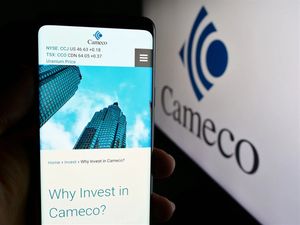– New Positive Clinical Data Demonstrate Momentum on Investigational Once-Daily, Once-Weekly and Twice-Yearly Dosing Strategies –
– Key Findings from Studies Evaluating Potential Future Long-Acting Combination Regimens Affirm Commitment to Continuous Biomedical Innovation –
Gilead Sciences, Inc. (Nasdaq: GILD) today announced the presentation of key data highlighting the breadth of its innovative HIV treatment research pipeline. The latest results explore clinical outcomes from a study evaluating an investigational combination regimen of bictegravir and lenacapavir, new findings from a study evaluating the investigational combination of lenacapavir with broadly neutralizing antibodies (bNAbs), and new proof-of-concept data on GS-1720, a novel once-weekly integrase strand transfer inhibitor (INSTI). The data presented at the 31st Conference on Retroviruses and Opportunistic Infections (CROI) demonstrate Gilead’s commitment to advancing the next wave of biomedical innovations in HIV to address the unmet needs of people with the virus and help end the epidemic worldwide.
“The latest findings across our HIV pipeline showcase the potential of multiple candidates to help transform HIV management,” said Jared Baeten, MD, PhD, Vice President, HIV Clinical Development, Gilead Sciences. “Exploring a broad range of agents with different dosing frequencies and administration methods is a fundamental aspect of Gilead’s research and development program. By working to provide more options that aim to enhance adherence, we can help more individuals achieve sustained viral suppression, and further help reduce the transmissible virus pool at the population level.”
Oral, Once-Daily Combination of Bictegravir and Lenacapavir
ARTISTRY-1 (NCT05502341) is an ongoing, open-label, multicenter Phase 2/3 study being conducted to compare the investigational once-daily combination of bictegravir, an integrase strand transfer inhibitor, and lenacapavir, a first-in-class capsid inhibitor, versus current therapy in people with HIV who are virologically suppressed on complex regimens. It is estimated that up to 10% of people with HIV take a complex treatment regimen, defined as 2 or more pills each day. While single-tablet regimens for HIV have been available for well over a decade, some individuals cannot take a single-tablet option, although studies have found greater adherence for one pill, once daily options.
In new Phase 2 data, 128 participants on a stable baseline regimen for six or more months prior to screening were randomly allocated in a 2:2:1 ratio to receive once-daily oral bictegravir 75 mg + lenacapavir 25 mg (n=51), bictegravir 75 mg + lenacapavir 50 mg (n=52) or continue their current stable baseline regimen (n=25). The primary endpoint was the proportion of patients without virologic suppression (HIV viral load ≥50 copies/mL per FDA Snapshot) at Week 24. Key secondary endpoints included the proportion of participants with virologic suppression (HIV viral load ≤50 copies/mL per FDA Snapshot) and the proportion of participants with treatment-emergent adverse events (TEAEs).
Results showed that all three treatment groups had robust virologic suppression at six months, with consistently low viral loads throughout the study. None of the participants in the lower-dose lenacapavir group or the stable baseline regimen group experienced viral load rebound (≥50 copies/mL) through Week 24. In the higher dose lenacapavir group, only one participant had a viral load increase above the threshold, which was later suppressed without changing the regimen.
Additionally, both bictegravir + lenacapavir regimens exhibited favorable safety profiles with similar rates of TEAEs. Up to Week 24, the most common TEAEs in these groups were diarrhea (7%), COVID-19 (6%), and constipation (5%). Drug-related TEAEs leading to discontinuation were reported in 2% of participants receiving bictegravir 75 mg + lenacapavir 50 mg, 2% receiving bictegravir 75 mg + lenacapavir 25 mg, and none in the stable baseline regimen group.
The findings help support the efficacy and safety profile of switching individuals with HIV on complex regimens to a potentially less complex combination of bictegravir and lenacapavir. This investigational combination is being further evaluated as a single-tablet regimen in the Phase 3 portion of the ARTISTRY-1 study.
Twice-Yearly Dosing with Lenacapavir and bNAbs
In a recent Phase 1b study published in The Lancet HIV, the investigational combination of lenacapavir + teropavimab (GS-5423, TAB) + zinlirvimab (GS-2872, ZAB) demonstrated high efficacy and maintained virologic suppression for six months with twice-yearly dosing. To follow up on the potential of this long-acting combination, an additional cohort to the Phase 1B study was added to evaluate the regimen in an expanded population of virologically suppressed adults with HIV on ARV for 18 months or longer with high-level sensitivity to either bNAb, but not both, to determine whether sensitivity to either bNAb impacts the safety profile or efficacy of this investigational combination approach.
Doses of TAB and ZAB were weight-based. All participants received lenacapavir (927 mg subcutaneously after oral loading) + TAB (30 mg/kg intravenously [IV]) and were randomly allocated in a 1:1 ratio to receive two different ZAB doses (Group 1, 10 mg/kg IV; Group 2, 30 mg/kg IV). Eleven participants were randomized and treated (Group 1, n=5; Group 2, n=6). Age range was 28–63 years; 3/11 were female; 4/11 were Black; & median CD4 count was 916 cells/µL.
At six months, the investigational long-acting combination of lenacapavir + TAB + ZAB was well tolerated, had a favorable safety profile, and maintained virologic suppression (HIV viral load ≤50 copies/mL) in 8/10 of participants. In addition, each of the six participants in the higher-dose ZAB group maintained virologic suppression at six months, showing the potential of this investigational long-acting treatment regimen with twice-yearly dosing.
Of the two participants who experienced virologic rebound, one was diagnosed with acute COVID-19 at the time of rebound, and one rebounded at Week 26. Both had HIV RNA below 100 copies at Week 26. Additionally, one participant restarted baseline antiretroviral therapy due to a protocol violation and was excluded from the efficacy analysis. Safety outcomes were similar between the two groups, and no AEs led to discontinuation of the study drug. There was one instance of a serious adverse event, which involved a soft tissue infection unrelated to study treatment.
The investigational combination of lenacapavir + TAB + ZAB has advanced to a Phase 2 study (NCT05729568). Evaluating the combination in virologically suppressed people with HIV, the study will assess safety and efficacy of the regimen in virologically suppressed participants followed longitudinally for multiple doses of the study regimen.
An additional observational study from the PRESTIGIO registry investigated susceptibility to the bNAbs TAB and ZAB in individuals with multidrug-resistant (MDR) HIV, who were resistant to four drug classes and may have limited options. In approximately 40% of participants, the virus was susceptible to TAB and ZAB, indicating that certain individuals living with multi-drug resistant HIV may be suitable candidates for future trials investigating long-acting regimens containing TAB and ZAB.
Long-Acting, Once-Weekly Dosing
New clinical data featured in a late-breaker oral presentation at CROI demonstrate the first proof of concept that an integrase strand transfer inhibitor (INSTI) has a pharmacokinetic profile suitable for a weekly dosing interval. GS-1720 is a selective INSTI being evaluated as a novel, investigational once-weekly antiretroviral agent in combination with long-acting agents with a goal to provide people with HIV with new long-acting options.
The ongoing Phase 1b open-label trial is being conducted in participants with HIV who are treatment-naïve or viremic and off antiretroviral therapy for at least 12 weeks. Twenty-eight people with HIV were randomly allocated to receive doses of GS-1720 (30, 150, 450, or 900 mg) on Day 1 and Day 2 and followed for 10 days. The primary endpoint was the maximum reduction of plasma HIV-1 RNA through post-dose Day 11. Results were presented for each of the four treatment cohorts.
GS-1720 demonstrated potential antiviral activity in those participants dosed above 150mg compared to baseline. GS-1720 was generally well tolerated. No participants experienced any serious AEs, Grade 3 or higher TEAEs, or AEs related to study drug. No treatment emergent INSTI resistance was observed at Day 11 for the 450mg and 150mg cohorts; resistance testing is ongoing for the other dose cohorts. These findings support the continued clinical evaluation of GS-1720 as part of a potential novel once-weekly oral HIV treatment option.
Gilead’s goal is to discover and develop innovative HIV medicines. We believe the next wave of innovation in HIV includes long-acting options that are aiming to help address the differentiated needs and preferences of the diverse range of individuals and communities affected by the epidemic. Optionality is critical for those who are not able to adhere to current regimens and for helping people with HIV, regardless of where they find themselves on the continuum of care, to improve their individual outcomes and advance public health.
Teropavimab (GS-5423, TAB), zinlirvimab (GS-2872, ZAB), and GS-1720 are investigational compounds and are not approved by the U.S. Food and Drug Administration or any other regulatory authority for any use. The use of these compounds alone or in combination with lenacapavir are investigational. Their safety and efficacy are unknown.
Bictegravir and lenacapavir in combination are investigational and not approved anywhere globally. Their safety and efficacy have not yet been established.
Lenacapavir, marketed as Sunlenca®, is approved in in Australia, Canada, the European Union, Israel, Japan, Switzerland, the United Arab Emirates, the United Kingdom and the United States for the treatment of people with multi-drug resistant HIV in combination with other antiretroviral(s). Please see below for the U.S. Indication and Important Safety Information for Sunlenca.
There is currently no cure for HIV or AIDS.
About Sunlenca
Sunlenca (300 mg tablet and 463.5 mg/1.5 mL injection) [(lenacapavir)] is a first-in-class, long-acting HIV capsid inhibitor indicated for the treatment of HIV infection, in combination with other antiretroviral(s), in adults with multi-drug resistant HIV who are heavily treatment-experienced. Sunlenca is the only HIV treatment option administered twice-yearly. Sunlenca tablets are approved for oral loading during initiation of Sunlenca treatment, prior to or at the time of the first long-acting lenacapavir injection depending on initiation option.
The multi-stage mechanism of action of Sunlenca’s active pharmaceutical agent, lenacapavir, is distinguishable from other currently approved classes of antiviral agents. While most antivirals act on just one stage of viral replication, Sunlenca is designed to inhibit HIV at multiple stages of its lifecycle and has no known cross resistance exhibited in vitro to other existing drug classes.
Lenacapavir is being developed as a foundation for future HIV therapies. The goal is to offer both long-acting oral and injectable options with various dosing frequencies in combination with other antiretroviral agents for treatment or as a single agent for prevention. This approach aims to help address the individual needs and preferences of people with HIV and people who would benefit from pre-exposure prophylaxis (PrEP). The use of lenacapavir for HIV prevention is investigational and the safety and efficacy of lenacapavir for this use have not been established. Lenacapavir is being evaluated as a long-acting option in multiple ongoing and planned early and late-stage clinical studies in Gilead’s HIV prevention and treatment research program.
U.S. Indication for Sunlenca
Sunlenca, a human immunodeficiency virus type 1 (HIV-1) capsid inhibitor, in combination with other antiretroviral(s), is indicated for the treatment of HIV-1 infection in heavily treatment-experienced adults with multidrug resistant HIV-1 infection failing their current antiretroviral regimen due to resistance, intolerance, or safety considerations.
U.S. Important Safety Information for Sunlenca
Contraindications
- Coadministration: Concomitant administration of SUNLENCA is contraindicated with strong CYP3A inducers.
Warnings and precautions
- Immune reconstitution syndrome, including the occurrence of autoimmune disorders with variable time to onset, has been reported in patients treated with combination antiretroviral (ARV) therapy.
- Long-acting properties and potential associated risks with SUNLENCA: Residual concentrations of SUNLENCA may remain in the systemic circulation of patients for up to 12 months or longer. SUNLENCA may increase exposure, and potential risk of adverse reactions, to drugs primarily metabolized by CYP3A initiated within 9 months after last injection. Counsel patients regarding the dosing schedule because nonadherence could lead to loss of virologic response and development of resistance. If virologic failure occurs, switch to an alternative regimen if possible. If discontinuing SUNLENCA, begin alternate suppressive ARV regimen within 28 weeks from last injection.
- Injection site reactions may occur, and nodules and indurations may be persistent.
Adverse reactions
- Most common adverse reactions (incidence ≥3%, all grades) are injection site reactions (65%) and nausea (4%).
Drug interactions
- Prescribing information: Consult the full prescribing information for SUNLENCA for more information on Contraindications, Warnings, and potentially significant drug interactions, including clinical comments.
- Enzymes/transporters: Drugs that are strong or moderate inducers of CYP3A may significantly decrease the concentration of SUNLENCA. Drugs that strongly inhibit CYP3A, P-gp, and UGT1A1 together may significantly increase the concentration of SUNLENCA. SUNLENCA may increase the exposure of drugs primarily metabolized by CYP3A, when initiated within 9 months after the last injection of SUNLENCA, which may increase the potential risk of adverse reactions.
Dosage and administration
-
Dosage: Initiation with 1 of 2 options, followed by maintenance dosing once every 6 months. Tablets may be taken with or without food.
- Initiation Option 1: Day 1: 927 mg by subcutaneous injection and 600 mg orally (2 x 300-mg tablets). Day 2: 600 mg orally (2 x 300-mg tablets).
- Initiation Option 2: Day 1: 600 mg orally (2 x 300-mg tablets). Day 2: 600 mg orally (2 x 300-mg tablets). Day 8: 300 mg orally (1 x 300-mg tablet). Day 15: 927 mg by subcutaneous injection.
- Maintenance: 927 mg by subcutaneous injection every 26 weeks +/- 2 weeks from date of last injection.
- Missed Dose: During the maintenance period, if more than 28 weeks have elapsed since the last injection and if clinically appropriate to continue SUNLENCA treatment, restart the initiation dosage regimen from Day 1, Option 1 or Option 2.
Pregnancy and lactation
- Pregnancy: There is insufficient human data on the use of SUNLENCA during pregnancy. An Antiretroviral Pregnancy Registry (APR) has been established.
- Lactation: Individuals infected with HIV-1 should be instructed not to breastfeed, due to the potential for HIV-1 transmission.
About Gilead Sciences in HIV
Gilead Sciences, Inc. is a biopharmaceutical company that has pursued and achieved breakthroughs in medicine for more than three decades, with the goal of creating a healthier world for all people. The company is committed to advancing innovative medicines to prevent and treat life-threatening diseases, including HIV, viral hepatitis, COVID-19, and cancer. Gilead operates in more than 35 countries worldwide, with headquarters in Foster City, California.
For more than 35 years, Gilead has been a leading innovator in the field of HIV, driving advances in treatment, prevention and cure research. Gilead researchers have developed 12 HIV medications, including the first single-tablet regimen to treat HIV, the first antiretroviral for pre-exposure prophylaxis (PrEP) to help reduce new HIV infections, and the first long-acting injectable HIV treatment medication administered twice-yearly. Our advances in medical research have helped to transform HIV into a treatable, preventable, chronic condition for millions of people.
Gilead is committed to continued scientific innovation to provide solutions for the evolving needs of people affected by HIV around the world. Through partnerships, collaborations and charitable giving, the company also aims to improve education, expand access and address barriers to care, with the goal of ending the HIV epidemic for everyone, everywhere. Gilead was recognized as the number one philanthropic funder of HIV-related programs in a report released by Funders Concerned About AIDS.
Learn more about Gilead’s unique collaborations worldwide and the work to help end the global HIV epidemic.
Forward-Looking Statements
This press release includes forward-looking statements within the meaning of the Private Securities Litigation Reform Act of 1995 that are subject to risks, uncertainties and other factors, including Gilead’s ability to initiate, progress or complete clinical trials or studies within currently anticipated timelines or at all, and the possibility of unfavorable results from ongoing and additional clinical trials or studies, including those involving bictegravir, lenacapavir, teropavimab, zinlirvimab, and GS-1720; uncertainties relating to regulatory applications and related filing and approval timelines, including potential applications for indications currently under evaluation; the possibility that Gilead may make a strategic decision to discontinue development of these programs and, as a result, these programs may never be successfully commercialized for the indications currently under evaluation; and any assumptions underlying any of the foregoing. These and other risks, uncertainties and factors are described in detail in Gilead’s Annual Report on Form 10-K for the year ended December 31, 2023, as filed with the U.S. Securities and Exchange Commission. These risks, uncertainties and other factors could cause actual results to differ materially from those referred to in the forward-looking statements. All statements other than statements of historical fact are statements that could be deemed forward-looking statements. The reader is cautioned that any such forward-looking statements are not guarantees of future performance and involve risks and uncertainties and is cautioned not to place undue reliance on these forward-looking statements. All forward-looking statements are based on information currently available to Gilead, and Gilead assumes no obligation and disclaims any intent to update any such forward-looking statements.
U.S. full Prescribing Information for Sunlenca is available at www.gilead.com
Sunlenca, Gilead and the Gilead logo are registered trademarks of Gilead Sciences, Inc., or its related companies.
For more information about Gilead, please visit the company’s website at www.gilead.com, follow Gilead on Twitter (@Gilead Sciences) and LinkedIn, or call Gilead Public Affairs at 1-800-GILEAD-5 or 1-650-574-3000.
View source version on businesswire.com: https://www.businesswire.com/news/home/20240304716860/en/
Contacts
Jacquie Ross, Investors
investor_relations@gilead.com
Meaghan Smith, Media
public_affairs@gilead.com


















